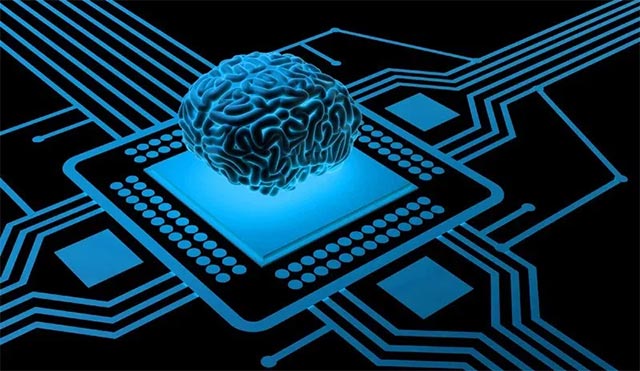Intel is developing a chip that can distinguish scents
'Brain computer' interfaces, artificial neural networks and neural chips are areas that are expected to play a role in shaping the future of computer science in the next few years. The common ground of these fields is that they are modeled from the structure of the human brain to control new frameworks and computing interfaces. This is a modern science that many universities, research institutes as well as technology companies are investing in development, which is inspired not only by computer science but also from biology and physics. , mathematics and electronics engineering.
In a recently published article in the journal Nature, a team of Intel researchers collaborating with several leading US olfactory neuroscience experts have successfully fabricated a sample of neural chips ability to distinguish between different types of scents.
This chip is inspired by our olfactory structure - an important component of the brain responsible for distinguishing scents by analyzing electrical signals sent from the olfactory cells in the nose. when we breathe. The design of the chip is proposed based on neural circuits that 'glow' when the brain processes odors, and the whole process will be done on the Intel neuromorphic (neuromorphic) system Intel Loihi.

To analyze and interpret the signals, the team used a neural algorithm that acts as a 'receptor' for electrical impulses. This AI algorithm is trained on a set of 10 "odors" (reading and measuring from 72 different chemical sensors). As a result, it is able to accurately distinguish between the types of odors given and the amount of training sample is much less than the traditional chip.
This project is at an early stage of development, it is too early to talk about practical applicability on a large scale, but the prospects for success are huge. The team believes that their neural algorithm can be applied to "all problems related to signal recognition embedded in unknown platforms". In the future, researchers plan to improve the chip design and expand its function, not only to be able to detect scents, but also to be able to identify other senses such as touch and sight. .
You should read it
- Super power-saving AI chip, usable for all devices that have appeared
- Smartphone scent will be sold globally
- Instructions for new learners AI: networks of neural networks
- Intel revealed new AI chips to compete with Nvidia's GPUs
- Russian neural networks help radiologists analyze images
- Intel launches a new AI chip that is 1,000 times faster than CPU
 Samsung began mass-producing the world's 'fastest memory' for smartphones
Samsung began mass-producing the world's 'fastest memory' for smartphones The real-time translation feature officially docked the Google Translate app
The real-time translation feature officially docked the Google Translate app Why is the Apple logo a defective apple, not intact
Why is the Apple logo a defective apple, not intact Secrets inside all the iPhones that not everyone knows
Secrets inside all the iPhones that not everyone knows Nubia Red Magic 5G: The world's first smartphone equipped with a 144Hz screen
Nubia Red Magic 5G: The world's first smartphone equipped with a 144Hz screen Proton Technologies introduces advanced anti-censorship features
Proton Technologies introduces advanced anti-censorship features